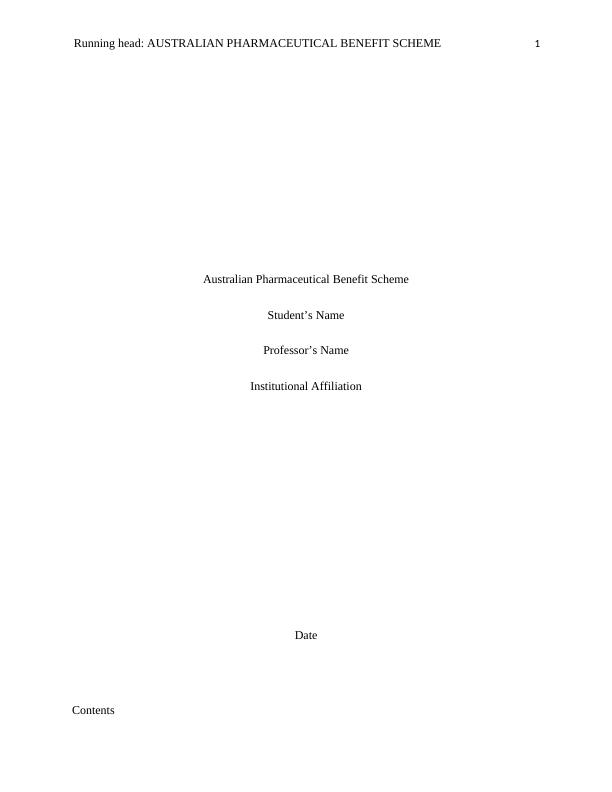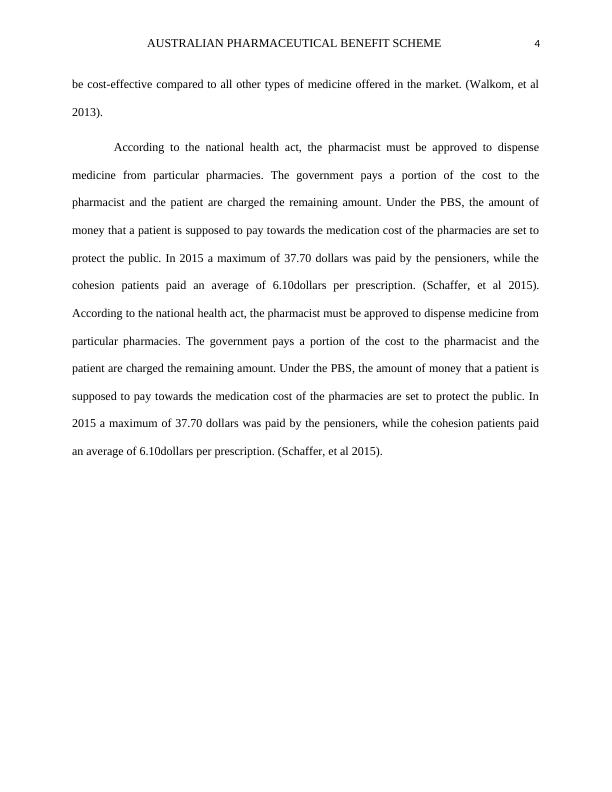Australian Pharmaceutical Benefit Scheme
12 Pages2752 Words158 Views
Added on 2023-06-12
About This Document
The Australian Pharmaceutical Benefit Scheme (PBS) offers free medication to pensioners and subsidizes over 211 million prescriptions. The PBS advisory committee assesses and recommends which drugs should be listed. Australia is one of the biggest consumers of medicine due to the high prevalence of chronic diseases. The government contributes a large amount of funds to the healthcare system, and there is private health insurance available. Both prescription and non-prescription forms of medication are common in the Australian healthcare system. Challenges faced by the PBS include preauthorization, price renegotiations, and post-market surveillance.
Australian Pharmaceutical Benefit Scheme
Added on 2023-06-12
ShareRelated Documents
End of preview
Want to access all the pages? Upload your documents or become a member.
Australian Pharmaceutical Benefits Scheme and Medicine Consumption
|15
|2500
|394
The Australian Pharmaceutical Benefits Scheme and the consumption of medicines in Australia
|11
|2474
|139
Professional nursing concepts in Australia
|4
|697
|289
Australian Health Scheme: Analysis Report of the Australian Health Care
|12
|2825
|377
The Australian Pharmaceutical Benefits Scheme and the Consumption of Medicines in Australia
|13
|2585
|421
Health Financial Management
|12
|2834
|97




